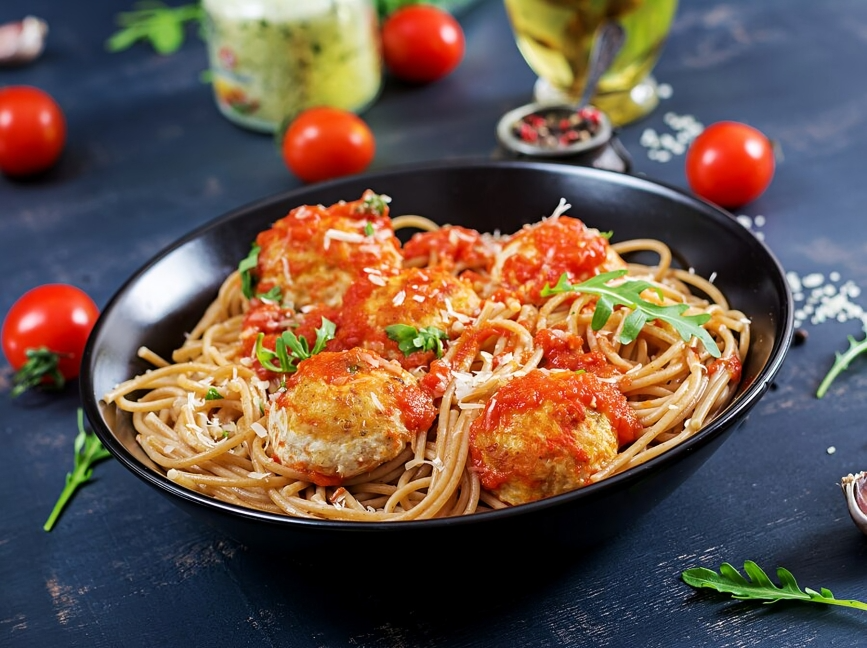Tagliolini, a delicate and versatile Italian pasta, has earned its place as a favorite among culinary enthusiasts worldwide. Known for its thin, ribbon-like shape, tagliolini pairs effortlessly with various sauces and ingredients. This pasta, a close cousin to tagliatelle, carries an elegant charm that elevates any dish it graces.
Exploring the world of tagliolini reveals a rich tapestry of flavors, history, and techniques. This article delves into its origins, preparation methods, pairing possibilities, and why it remains a timeless classic in Italian cuisine. Let us uncover what makes tagliolini an enduring symbol of culinary artistry.
Table of Contents
ToggleThe Origins of Tagliolini
A Legacy Rooted in Tradition
Tagliolini originates from Northern Italy, particularly Emilia-Romagna and Piedmont, regions celebrated for their rich gastronomic traditions. The pasta’s name derives from the Italian word “tagliare,” meaning “to cut,” referencing its method of preparation. Historically, skilled hands would roll and cut dough with precision, creating uniform ribbons of tagliolini.
A Dish for Every Occasion
Traditionally, tagliolini graced tables during festive occasions, symbolizing warmth and family connections in Italian households. Over time, it evolved into a versatile dish, suitable for both casual meals and fine dining experiences. Its adaptability has cemented its place as a beloved staple across generations.
Crafting the Perfect Tagliolini
Ingredients That Make the Difference
Creating tagliolini begins with simple yet high-quality ingredients, ensuring its texture and flavor shine in every dish. Typically, chefs use a combination of flour and eggs, occasionally incorporating semolina for added firmness. Fresh ingredients contribute significantly to the pasta’s smooth consistency and authentic taste.
The Art of Preparation
Making tagliolini requires precision, patience, and skill, highlighting the artistry involved in crafting this classic Italian pasta. The dough is rolled thinly, folded carefully, and cut into narrow ribbons using a sharp knife or pasta cutter. Once prepared, it is either dried for later use or cooked fresh for a more tender texture.
Pairing Tagliolini with Culinary Masterpieces
Simple Yet Sublime Sauces
Tagliolini shines when paired with light, flavorful sauces that allow its delicate texture to take center stage. Butter and sage create a simple yet aromatic dish, perfect for those who appreciate understated elegance. Similarly, a drizzle of olive oil and garlic enhances the pasta’s subtle flavors effortlessly.
Decadent Creations with Cream
For richer indulgence, creamy sauces like Alfredo or truffle-infused blends transform tagliolini into an unforgettable culinary experience. The pasta absorbs the luxurious flavors beautifully, making each bite a harmonious fusion of taste and texture. These combinations are often featured in upscale dining establishments.
Seafood and Seasonal Ingredients
Tagliolini’s versatility extends to pairing with fresh seafood and seasonal vegetables, creating dishes that celebrate nature’s bounty. Clams, shrimp, or scallops complement the pasta’s thin ribbons, offering a delightful balance of flavors. Meanwhile, incorporating asparagus or cherry tomatoes adds vibrancy and freshness to every serving.
Regional Variations and Innovative Twists
Traditional Regional Recipes
Across Italy, regional variations of tagliolini highlight local ingredients and culinary preferences, showcasing the pasta’s adaptability and charm. In Piedmont, tagliolini al tartufo, served with truffle, offers a luxurious take on this classic dish. Emilia-Romagna features tagliolini in brodo, a comforting bowl of pasta in rich broth.
Modern Takes on Tagliolini
Chefs worldwide experiment with tagliolini, introducing innovative twists while maintaining respect for its traditional roots. Incorporating unique spices, alternative flours, or unexpected ingredients like squid ink adds exciting dimensions to classic recipes. These modern interpretations expand the pasta’s global appeal and inspire culinary creativity.
The Cultural Significance of Tagliolini
A Symbol of Italian Hospitality
In Italy, sharing a dish reflects warmth, generosity, and the nation’s profound love for food and community. Families often gather around a meal of freshly prepared pasta, strengthening bonds and cherishing shared traditions. This cultural significance ensures remains a treasured part of Italian heritage.
A Global Culinary Ambassador
It transcends borders, serving as a testament to Italy’s influence on global cuisine and culinary appreciation. Its presence in international kitchens highlights the universal appeal of Italian food. Whether served traditionally or with a creative twist, tagliolini continues to win hearts worldwide.
Tips for Preparing and Enjoying Tagliolini
Cooking Tagliolini to Perfection
When preparing tagliolini, it is essential to ensure the pasta is cooked al dente to retain its delicate texture and flavor. Moreover, boiling it in salted water not only enhances its taste but also provides a perfect foundation for flavorful pairings. Additionally, tossing the pasta immediately with sauce ensures a seamless blend of ingredients, resulting in a truly harmonious dish.
Elevating the Dining Experience
Enhance your tagliolini experience by pairing it with complementary wines, such as a crisp white or a light red. Furthermore, adding freshly grated Parmesan or Pecorino cheese further enhances the pasta’s already delightful flavor profile. Lastly, garnishing with herbs like basil or parsley not only adds a touch of color but also infuses a fresh aroma.
Conclusion
Tagliolini clearly embodies the essence of Italian cuisine, offering simplicity, elegance, and versatility in every dish it graces. Moreover, from its historical roots in Northern Italy to its current global popularity, this pasta remains a beloved culinary treasure. Whether enjoyed traditionally or enhanced with modern innovations, it consistently celebrates the timeless art of Italian cooking.
Additionally, by mastering the preparation and pairing of this, you can create memorable dishes that truly delight the senses. Furthermore, its delicate ribbons, combined with flavorful sauces or fresh ingredients, ensure an unforgettable dining experience. Therefore, embrace the charm and bring a taste of Italy’s rich heritage to your table.











